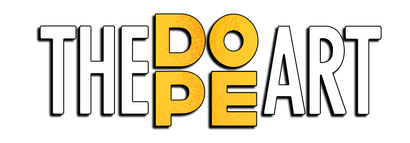Your Cart is Empty
FREE SHIPPING ON ORDERS OVER $100 in the U.S.
FREE SHIPPING ON ORDERS OVER $100 in the U.S.
Exploring the Beauty of Darkness: An Introduction to Dark Macabre Art
March 02, 2023 8 min read
Definition of Dark Macabre Art
Dark Macabre Art is a style of art that focuses on subjects that are typically associated with death, horror, and the supernatural. It often features dark, unsettling imagery that explores the darker side of the human psyche.
The term "macabre" refers to something that is disturbing, gruesome, or horrifying. It often involves themes such as death, decay, and the supernatural. In Dark Macabre Art, these themes are explored through a variety of mediums, including painting, sculpture, and photography.
At its core, Dark Macabre Art is a celebration of the beauty of darkness, and the ways in which it can be used to explore deeper philosophical and psychological themes related to the human experience. Through the use of macabre and unsettling imagery, artists are able to confront the reality of death, the impermanence of life, and the darker aspects of human nature in a powerful and emotionally resonant way.
Brief history of Macabre Artwork
The history of macabre paintings can be traced back to ancient times, when artists would depict death and the afterlife in their works. However, the term "macabre" was not coined until the 14th century, when it was used to describe a type of dance performed in France that depicted death as the ultimate equalizer.
During the Renaissance period, artists like Hieronymus Bosch and Pieter Bruegel the Elder created macabre works that featured grotesque and nightmarish scenes depicting death and the horrors of the afterlife.
In the 18th and 19th centuries, the Romantic movement embraced the macabre and supernatural, with artists such as Francisco Goya and Edgar Allan Poe creating works that were both beautiful and unsettling. The Gothic literature and art movement also emerged during this time, featuring dark, moody imagery and themes that explored the darker side of human nature.
Today, Dark Macabre Art continues to evolve and grow as artists explore new ways to explore the beauty of darkness and the human experience through their work. It remains a genre that is appreciated by a diverse range of people, including collectors, horror fans, and those with an interest in exploring the darker aspects of humanity.
Importance of Dark Macabre Paintings
Dark Macabre Art has an important role in the world of art and culture. It challenges our perceptions of what is beautiful and acceptable in art and explores the darker aspects of the human psyche. By depicting death, horror, and the supernatural, Dark Macabre Art allows us to confront our fears and anxieties in a safe and controlled environment.
Styles of Dark Macabre Art
Surrealism
Surrealism is an art movement that began in the 1920s and aimed to explore the workings of the unconscious mind, often using dreamlike and bizarre imagery.
Through their use of surreal imagery, Macabre Surrealism artists are able to delve into deeper psychological and emotional themes related to the human experience. By challenging our perceptions of reality and exploring the darker aspects of humanity, these artists are able to create works that are both thought-provoking and emotionally resonant.
Gothic Macabre
In Macabre Gothic Art, artists often use Gothic motifs such as dark forests, abandoned castles, and graveyards as settings for their works. These works often depict vampires, ghosts, and other supernatural creatures, as well as human characters who are often shown in a state of distress or despair.
Horror Macabre
In Macabre Horror Art, artists often draw inspiration from horror literature and film, creating works that depict terrifying creatures, monsters, and supernatural phenomena. These works often feature themes such as death, violence, and the occult, exploring the darker aspects of the human psyche and the horrors that lie beyond our understanding.
Fantasy Macabre
Macabre Dark Fantasy Art blends elements of horror, fantasy, and the supernatural. It often features dark, unsettling imagery that explores the darker side of fantasy worlds and creatures.
Fantasy artists, often draw inspiration from Gothic literature and folklore, creating dark, moody works that depict mythical creatures such as vampires, werewolves, and demons. These works often feature themes such as death, decay, and the supernatural, exploring the darker side of fantasy worlds and the human psyche.
Iconic Dark Macabre Artworks
Time is King
by Jesse Johnson
"Time is King" is a highly regarded work of Dark Macabre Art that has captured the attention of viewers and collectors alike. Created by artist Jesse Johnson, the painting features striking imagery and intricate details that reflect the macabre and surreal themes of the genre.
"Time is King" has become particularly notable for its role in the birth of the Eternal Royals King and Queen collection, a series of digital art pieces released on the blockchain in 2021.
The Garden of Earthly Delights
by Hieronymus Bosch
"The Garden of Earthly Delights" is a triptych painting by the Dutch artist Hieronymus Bosch, created between 1490 and 1510. The painting depicts a surreal and fantastical landscape, featuring various scenes of paradise, earthly pleasure, and damnation.
The left panel of the triptych depicts the Garden of Eden, with Adam and Eve surrounded by various animals and mythical creatures. The central panel is the most famous and intricate, depicting a surreal landscape filled with naked human figures engaging in various forms of pleasure and vice, such as music, dance, and sexual activity. The right panel depicts the torments of Hell, with demons torturing the damned souls in various grotesque and horrific ways.
The Persistence of Memory
by Salvador Dali
"The Persistence of Memory" is a surrealist painting by the Spanish artist Salvador Dali, created in 1931. The painting depicts a dreamlike landscape with melting clocks draped over tree branches, a distorted face with a limp pocket watch, and various objects that appear to be melting or dissolving.
The painting is often interpreted as a meditation on the fluidity of time and the nature of memory. The melting clocks represent the way time can seem to stretch or contract, depending on one's perception, while the distorted face suggests the fleeting nature of memory.
The Scream
by Edvard Munch
"The Scream" is a painting by the Norwegian artist Edvard Munch, created in 1893. The painting depicts a person standing on a bridge, screaming in agony against a blood-red sky, with two figures in the background appearing to be walking away.
The painting is often interpreted as a representation of the existential angst of modern life, with the screaming figure representing the universal feeling of despair and isolation. Munch himself described the painting as being inspired by a personal experience of feeling overwhelmed by anxiety and a sense of dread.
FAQs:
What distinguishes dark macabre art from horror art?
Dark Macabre Art is a style of art that explores the darker aspects of the human psyche, often featuring imagery related to death, decay, and the supernatural. It is characterized by its surreal and fantastical elements, which are used to explore deeper psychological and emotional themes.
Horror Art, on the other hand, is a genre of art that is specifically designed to frighten and horrify the viewer. It often features grotesque and violent imagery, such as monsters, gore, and blood. The goal of Horror Art is to elicit a visceral emotional response from the viewer, often through shock and fear.
How do artists typically create dark macabre art?
- Drawing and Painting: Many Dark Macabre Artworks are created through traditional drawing and painting techniques, often featuring intricate and detailed imagery. Artists may use mediums such as ink, charcoal, or oil paint to create their works.
- Sculpture: Sculpture is another common medium for Dark Macabre Art, with artists using materials such as bronze, wood, or clay to create three-dimensional works. Sculptors may use realistic or stylized techniques to create their macabre imagery.
- Photography: Some artists use photography to create Dark Macabre Art, using lighting and other techniques to create eerie and unsettling imagery.
- Digital Art: In recent years, many artists have turned to digital art as a way to create Dark Macabre Art, using software programs to create surreal and otherworldly imagery.
- Mixed Media: Many Macabre paintings combine different mediums and techniques to create a unique and striking effect. For example, an artist might combine drawing, painting, and sculpture to create a multi-dimensional work
What is the significance of death in dark macabre art?
Death is a recurring and significant theme in Dark Macabre Art, as it represents the ultimate unknown and a source of both fear and fascination for many people. Death is often depicted in Dark Macabre Art through macabre and unsettling imagery, such as skeletons, skulls, and other symbols of mortality.
One of the main reasons for the significance of death in Dark Macabre Art is its ability to elicit strong emotional responses from viewers. By confronting the reality of death in a powerful and often unsettling way, Dark Macabre Art can create a sense of unease and discomfort in the viewer, challenging them to confront their own mortality and the impermanence of life.
Is dark macabre art only for a niche audience?
While Dark Macabre Art may have a reputation for being niche or underground, it has gained a wider audience in recent years and has become more mainstream in some respects. Dark Macabre Art is appreciated by a diverse range of people, including art collectors, horror fans, and those with an interest in the darker aspects of human nature.
One reason for the wider appeal of Dark Macabre Art is its ability to elicit powerful emotions and explore complex themes in a unique and thought-provoking way. By using surreal and macabre imagery to represent the darker aspects of humanity, Dark Macabre Art can create a sense of unease and discomfort in viewers, challenging them to confront their own fears and anxieties.
Dark Macabre Art in Contemporary Culture
Dark Macabre Art in Film and Television
Dark Macabre Art has had a significant influence on film and television, with many directors and writers drawing inspiration from the genre in their work. Here are some examples of Dark Macabre Art in film and television:
- "The Cabinet of Dr. Caligari" (1920) - A silent film that is often considered one of the first examples of horror cinema, featuring a macabre and surreal visual style.
- "The Addams Family" (1964) - A television show that features a family of eccentric and macabre characters, whose dark humor and Gothic aesthetic have become iconic.
- "The Exorcist" (1973) - A horror film that explores themes of possession and the supernatural, featuring disturbing and macabre imagery that has become legendary in the genre.
- "American Horror Story" (2011 - present) - A television anthology series that explores different horror sub-genres and features a diverse cast of macabre and unsettling characters and imagery.
Dark Macabre in Literature
- "Dracula" by Bram Stoker" - A Gothic novel that features macabre imagery and explores themes of death, sexuality, and the supernatural.
- "The Tell-Tale Heart" by Edgar Allan Poe - A short story that features a macabre and unsettling plot, exploring themes of guilt, paranoia, and the darker aspects of the human psyche.
- "Frankenstein" by Mary Shelley - A novel that explores the macabre themes of death and resurrection, and questions the ethics of scientific progress.
- "The Strange Case of Dr. Jekyll and Mr. Hyde" by Robert Louis Stevenson - A novel that explores the duality of human nature and features macabre imagery, such as the transformation of Dr. Jekyll into the monstrous Mr. Hyde.
Subscribe
Sign up to get the latest on sales, new releases and more …
Size Charts


















